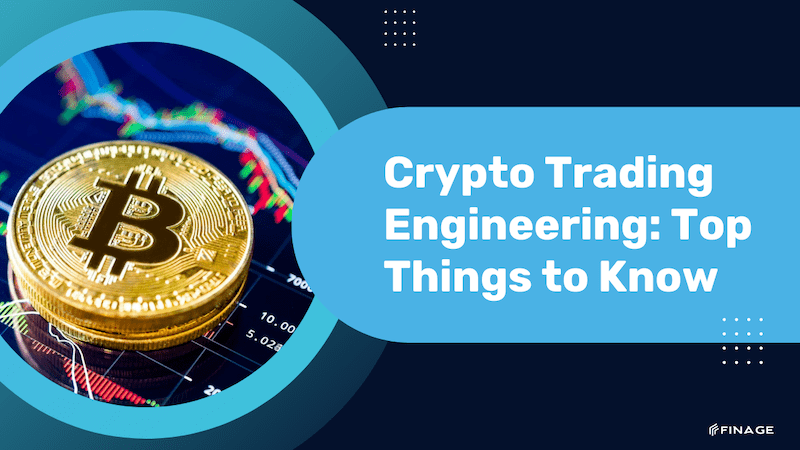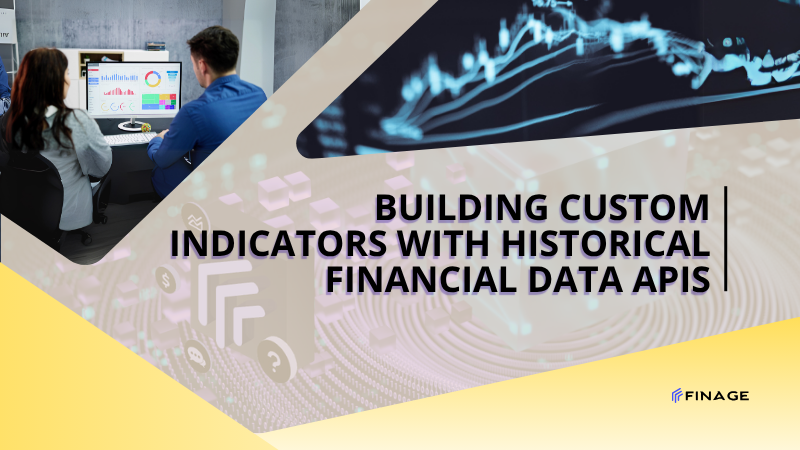Crypto Trading Engineering: Top Things to Know
5 min read • March 4, 2023

Introduction
Despite the debacle of earlier this year, the excitement, or rather the promise that accompanies crypto is still there. So, it should not be shocking for you to find out that there are more than a few jobs that you can take in the field. Probably the most important job in this field is the crypto trading engineer.
This person's job is literally to build tools and infrastructure that make a trader's life easier. Based on the product, a trader could not only perform at an optimum, but it would help lessen any risks. Granted, nothing is certain in the crypto sphere, but the right engineer doing things correctly can do some pretty cool things.
If you are interested in the work itself, you should know that it is in high demand and can pay well. Either way, you need to know how it works just so you can't be bamboozled. Without further ado, let's begin.
Contents:
- The Main Aspect
- Information
- Project
- Frontend
- Backend
- Final Thoughts
The Main Aspect
The most important thing when it comes to developing any tool or strategy used in this space is backtesting. This process simply ensures that the built asset is fully functional and can help as programmed.
It mainly focuses on past data that is run through in search of a result. This process is incredibly important as it allows traders to check on their tools without risking any money in the volatile market.
Information
You need to know that the past data taken comes in various forms and from different sources. Many of them are quite well established. This means that the analysis will be quite varied and spread out. The sources presenting the data will also have unique presentations and you have to be prepared to understand them or hire someone who does.
Project
The actual building of these tools can be separated into two sections with each one having its methods. These two sections are the front and the backend So, let's talk about them.
Frontend
The front is the first part which comprises various technologies that are used to boost user experience. Because it focuses heavily on the user interface, there are main attributes to focus on:
- accessibility,
- additional features,
- having a community.
The structure of the extracted data is also a major part of the front end. The difference is that it can be more dynamic, dealing with more than just the typical storage. Platforms that can pull this off also deal in things like dealing with customers and interacting with them.
The advantages of this type of structure tend to do with how overall dependable and scalable they are. All this lends to the user experience being a bit easier.
The final key bit concerning the front end is the streamlining of the entire process. Some platforms go this route and make things not just faster, but more efficient. Airflow is probably the best example of this and its focus on work management makes it particularly valuable.
Backend
The backend only had to do with one thing which is the aforementioned backtesting. For the most part, the process is pretty standard with a result that is predetermined. From this point, we can track ourselves toward the limits of the backtest. Through what is known as backtest scenes, we can see several scenarios play out. This of course occurs with data that is fed into and put out of the backtest engine.
Granted, the actual process of backtesting is beyond difficult and some of the charts and pieces of code you are going to see will not make sense. Traders who aren't as savvy in this space will by far have the most trouble. What is interesting, however, is the fact that despite the steep learning curve, going the route of conducting backtests is far better than going into the deep end.
With the backtest complete, you can finalize the entire process by adding in the specifics of what is needed. It will also be important to implement what we have learned from the backtest and its engine into what will be pushed out. What follows is another overly technical bit of work that only a sound-of-mind expert can tackle. That said, when the entire process is done, you come away from it with a few skills. For example, you have an in-depth look at both technical and fundamental analysis as well as a proper understanding of workflow.
Final Thoughts
Well, now that you have seen how this part of the crypto market works, are you still interested? As a trader, you are probably saying that it's a no-brainer as long as someone does it for you. However, as an aspiring engineer, you now realize just how complex the whole thing is. Fortunately, it is not so complex that it is unworkable. For the most part, it is just a unique arrangement of frontend and backend building that comes with an automated testing phase.
As for the future, several things are hoping to be met including a more wide-ranging backtesting phase. Also, the ability to create bots that can achieve this and incorporate airflow are crucial parts that have to be met. What we have learned today won't make you an instant success, but it will help you with the tough moments. With that said, you can try out what you've learned for yourself and see how things turn out. Good luck!
You can get your Real-Time and Historical Cryptocurrency Data with Finage free Crypto Data API key.
Build with us today!
Claim Your Free API Key Today
Access stock, forex and crypto market data with a free API key—no credit card required.

Stay Informed, Stay Ahead
Finage Blog: Data-Driven Insights & Ideas
Discover company news, announcements, updates, guides and more


